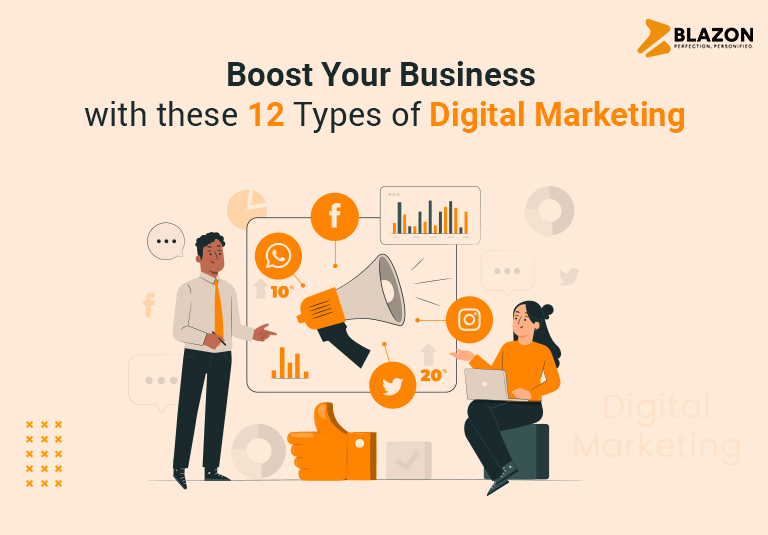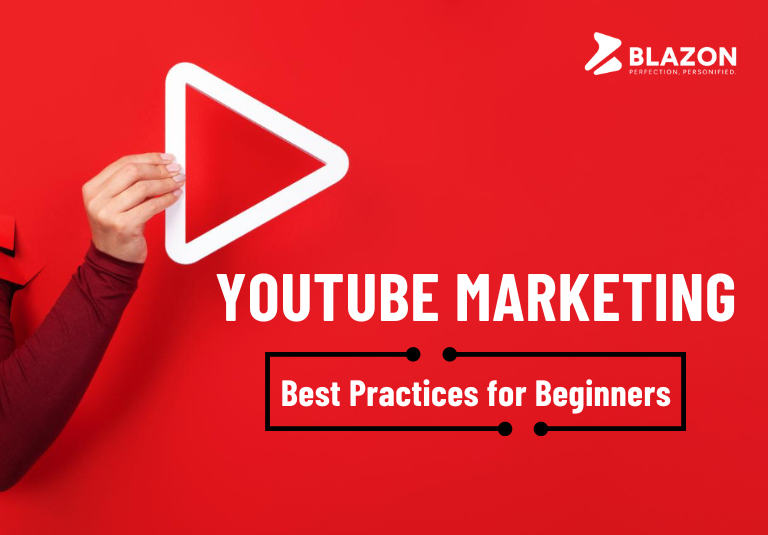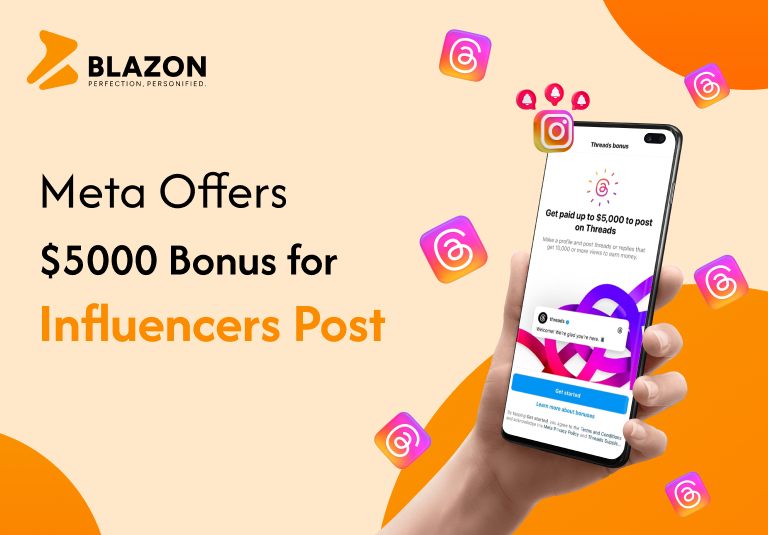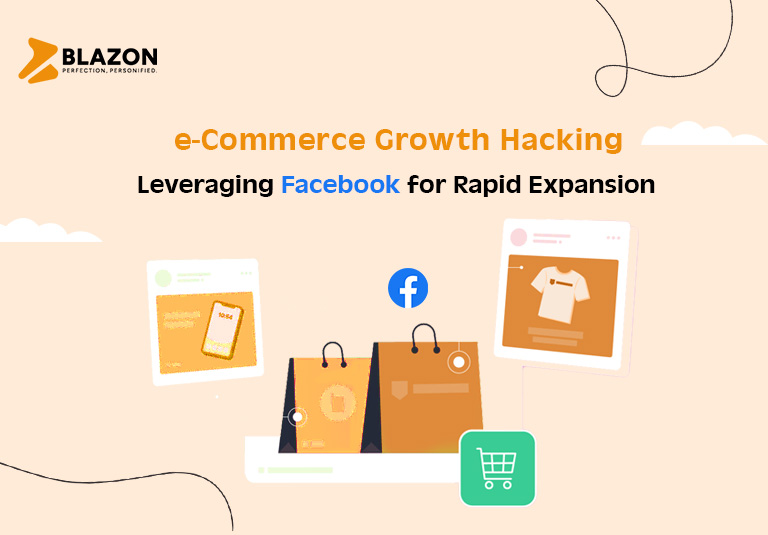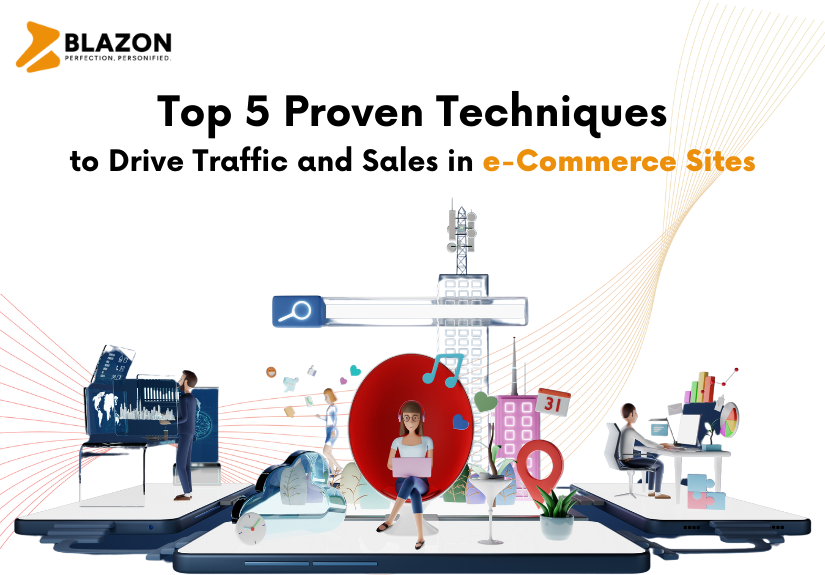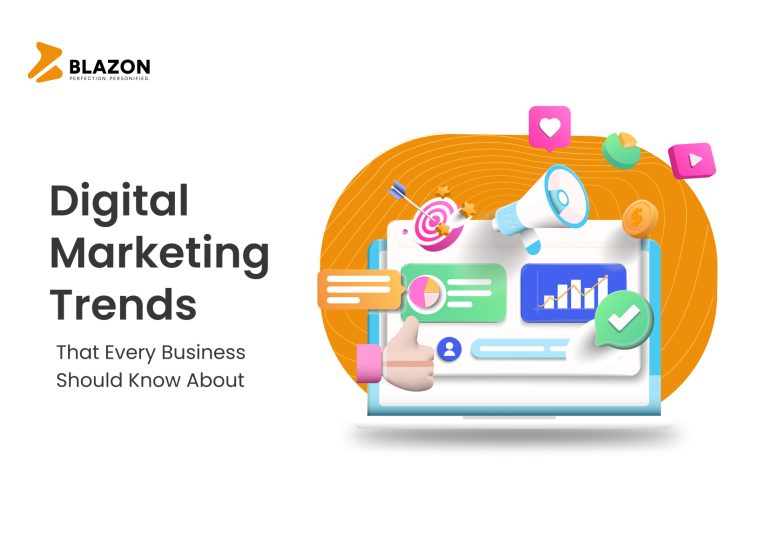Introduction to Influencer Marketing
A. Definition and Evolution
Influencer marketing, a dynamic facet of modern advertising, has evolved into a powerhouse strategy. Its roots lie in leveraging individuals with a substantial following and persuasive sway over their audience to endorse products or services. However, its evolution transcends mere endorsements. Influencer marketing now encapsulates collaborative partnerships between brands and influential personalities to engage with audiences authentically. From the early stages of celebrities promoting products to today’s micro-influencers and content creators shaping consumer perceptions, the landscape has undergone a significant shift. This evolution marks a pivotal turn where authenticity, relatability, and niche audience connection reign supreme.
B. Importance of Influencers in Today’s Marketing Landscape
In today’s hyper-connected digital era, influencers hold a significant position within the marketing domain. They serve as trusted guides amidst the overwhelming barrage of online content. These influential figures possess the uncanny ability to sway opinions, shape trends, and influence purchasing decisions among their devoted followers. Brands recognize the importance of this connection, understanding that consumers are more likely to trust recommendations from influencers they follow than traditional advertisements. Moreover, influencers offer a bridge to reach niche audiences, bypassing the conventional advertising noise and establishing genuine connections, making them invaluable assets in the contemporary marketing landscape.
C. The Potential of Going Viral through Influencer Collaborations
The connection between influencers and viral content is a potent concoction that can catapult brands to unprecedented heights. When an influencer resonates authentically with their audience, their endorsement or partnership can transform into a catalyst for viral dissemination. The potential for content to go viral through influencer collaborations rests on the foundation of authenticity, relatability, and the ability to evoke emotions. A well-crafted collaboration aligns the influencer’s persona with the brand’s essence, sparking a ripple effect that resonates across social media platforms. The virality stemming from these collaborations amplifies brand visibility, drives engagement, and holds the potential to propel a business into the digital limelight.
Understanding the Viral Impact of Influencer Marketing
Defining Goals: Setting Clear Objectives for Viral Success
Clarity is Key: Setting clear and specific goals is fundamental for achieving viral success through influencer marketing. It involves outlining measurable objectives such as increasing brand visibility, boosting engagement, driving conversions, or launching a new product.
Strategic Planning: Clearly defining these goals enables brands to strategize their influencer collaborations effectively. It includes determining the type of content needed, the influencers to engage, and the metrics to measure success.
Measuring Viral Impact: Establishing these clear objectives allows for tracking the impact of influencer campaigns accurately. Metrics like engagement rates, shares, and conversions become tangible indicators of viral success.
Target Audience Analysis: Identifying the Right Demographic and digging deeper beyond surface-level demographics, effective influencer marketing requires a comprehensive understanding of the target audience. Analysing psychographics, interests, and online behaviour helps in identifying the audience that resonates best with the brand.
Audience Alignment: Identifying the right demographic involves finding influencers whose audience aligns with the brand’s target audience. It ensures that the influencer’s followers share similar interests, values, and behaviours relevant to the brand.
Enhancing Authenticity: Establishing a deep understanding of the target demographic aids in selecting influencers who authentically connect with this audience. Authenticity between the influencer and the audience lays the groundwork for successful collaborations.
Exploring the Impact: Statistics and Case Studies on Viral Campaigns
Data-Driven Insights: Understanding the impact of influencer marketing involves delving into statistics and case studies. Analysing these insights provides data-driven knowledge about the effectiveness of influencer campaigns in achieving viral status.
Metrics for Success: Statistics highlight the remarkable increase in engagement, reach, and conversions stemming from successful influencer-driven campaigns. These metrics act as benchmarks for brands aiming for viral success.
Learning from Case Studies: Case studies unveil the strategies and tactics employed in successful influencer campaigns. They provide valuable insights into what resonates with audiences, offering guidance for brands planning their viral campaigns.
Selecting the Right Influencers for Viral Impact
Research and Analysis: Tools for Identifying Influential Personalities Utilise Influencer Marketing Platform that offer insights into influencers’ reach, engagement rates, audience demographics, and content performance. These platforms streamline the process of finding potential influencers aligned with your brand.
Social Media Analytics Tools: Employ social media analytics tools like Hootsuite to analyse an influencer’s audience demographics, engagement metrics, and content performance across various platforms.
Influencer Databases: Explore influencer databases such as Traackr that compile comprehensive profiles of influencers, allowing for detailed analysis and comparison based on audience metrics and content engagement.
Audience Persona Matching: Use audience persona tools to align an influencer’s audience demographics and interests with your brand’s target audience. It ensures a more precise fit and resonance with potential consumers.
Referral and Recommendations: Seek referrals and recommendations from industry peers, influencers you’ve previously collaborated with, or trusted networks. Word-of-mouth endorsements often lead to discovering influential personalities who might not be widely recognized but possess significant impact within specific niches.
Content Analysis: Dive into an influencer’s content strategy, tone, and brand affiliations. Assess if their content aligns with your brand’s values and messaging, ensuring a seamless fit for potential collaborations.
Authenticity Over Numbers: Evaluating Engagement and Relevance
Engagement Rates: Focus on an influencer’s engagement metrics, such as likes, comments, shares, and overall interaction with their audience. High engagement rates often indicate a genuine connection and influence, surpassing the significance of sheer follower numbers.
Micro-Influencers and Niche Audiences: Consider collaborating with micro-influencers or content creators with smaller but more engaged audiences within specific niches. These influencers often yield higher engagement rates and foster deeper connections with their dedicated followers.
Relevance to Brand Values: Evaluate an influencer’s content and alignment with your brand’s values, messaging, and target audience. Authenticity in content creation resonates better with audiences and contributes to the success of viral campaigns.
Audience Response and Interactions: Monitor how an influencer interacts with their audience. Genuine, responsive engagement indicates authenticity and trust, essential elements for effective collaborations.
Track Record of Authentic Partnerships: Assess an influencer’s history of collaborations. Investigate their previous partnerships to ensure they align with your brand’s image and values, maintaining authenticity and credibility.
Consistency and Content Quality: Analyse an influencer’s consistency in content creation and the quality of their posts. Consistency in delivering quality content contributes to audience trust and loyalty, which is pivotal for viral impact.
Choosing the Perfect Fit: Matching Influencers to Your Brand
Brand Alignment: Ensure that an influencer’s personality, content style, and values resonate with your brand’s identity. This alignment fosters authenticity, making the collaboration more relatable and impactful.
Target Audience Alignment: Match an influencer’s audience demographic and interests with your brand’s target audience. This synchronisation ensures that the influencer’s followers align with your potential consumers, increasing the chances of viral resonance.
Content Relevance: Assess an influencer’s content themes, topics, and messaging. Evaluate if their content naturally integrates or complements your brand, ensuring that collaborations feel organic and authentic.
Brand Affinity and Advocacy: Seek influencers who already demonstrate an affinity or advocacy for your brand. This pre-existing connection often leads to more authentic and enthusiastic collaborations, enhancing the potential for viral impact.
Long-Term Potential: Consider influencers who offer potential for long-term partnerships. Building ongoing relationships fosters deeper connections and enables sustained brand advocacy, potentially leading to multiple viral successes.
Diversity in Influencer Pool: Explore collaborating with influencers across diverse backgrounds, demographics, and content styles. This diversity expands your brand’s reach and resonance with different audience segments, contributing to broader viral potential.
Strategies for Creating Viral-Worthy Collaborations
A. Building Relationships: Engaging with Potential Influencers
Establishing meaningful relationships with potential influencers is a cornerstone of successful collaborations. Engaging authentically involves more than just pitching collaborations; it’s about fostering genuine connections. Initiating conversations, interacting with their content, and demonstrating a vested interest in their work lays the foundation for a relationship built on mutual respect and trust. Engaging consistently and thoughtfully showcases a brand’s commitment to understanding an influencer’s voice and audience, setting the stage for future collaborative endeavours that resonate authentically.
B. Crafting Effective Proposals: Pitching Collaborations Professionally
Crafting a compelling proposal is an art that involves professionalism and personalization. A well-crafted pitch showcases a brand’s sincerity and readiness to collaborate. Personalising proposals to align with an influencer’s style, audience, and previous work demonstrates a brand’s genuine interest in a meaningful partnership. Clearly outlining the collaboration’s objectives, expectations, deliverables, and compensation professionally lays the groundwork for a collaborative venture rooted in clarity and mutual understanding.
C. Setting Expectations: Outlining Deliverables and Mutual Benefits
Setting clear expectations is pivotal for a harmonious collaboration. Outlining deliverables, timelines, and mutual benefits ensures that both the brand and the influencer are on the same page. Clarity in expectations minimises potential miscommunications and sets the stage for a productive partnership. Emphasising the value exchange and mutual benefits fosters a sense of partnership, motivating influencers to invest their creativity and expertise, thereby increasing the potential for creating viral-worthy content that resonates authentically with their audience.
Executing a Viral Influencer Marketing Campaign
A. Co-Creation of Engaging Content: Ensuring Brand Alignment and Authenticity
The crux of a successful influencer marketing campaign lies in the collaborative creation of compelling and authentic content. Co-creating content ensures a seamless alignment between the influencer’s style and the brand’s identity, fostering authenticity. It’s not merely about product placement; it’s about crafting narratives that resonate with the influencer’s audience while staying true to the brand’s values; by integrating the brand message organically into the influencer’s content, a captivating and authentic story unfolds, captivating the audience and driving engagement, setting the stage for potential virality.
B. Campaign Optimization: Leveraging Platforms and Trends
In the digital sphere, optimising influencer campaigns requires a strategic approach that leverages platforms and trends. Understanding the nuances of each platform and the latest trends enables brands to tailor content for maximum impact. Whether it’s embracing the ephemeral nature of stories or harnessing the virality of a trending hashtag, aligning the campaign with the platform’s dynamics amplifies its reach. Moreover, staying abreast of emerging trends and adapting content accordingly positions the campaign to ride the wave of ongoing conversations, enhancing its potential to resonate and go viral.
C. Tracking and Measuring Success: Monitoring Metrics and Adjusting Strategies
Measuring the success of an influencer campaign extends beyond vanity metrics; it involves delving into tangible data to refine strategies. Monitoring key performance indicators such as engagement rates, click-through rates, conversions, and reach provides insights into the campaign’s effectiveness. Analysing these metrics allows for data-driven decision-making, enabling adjustments to optimise future strategies. This iterative process of tracking and measuring success empowers brands to fine-tune their approach, identifying what resonates best with the audience and enhancing the campaign’s potential for achieving viral impact.
Nurturing Long-Term Success through Influencer Relationships
A. Establishing Ongoing Partnerships: Cultivating Trust and Loyalty
Beyond singular campaigns, fostering long-term relationships with influencers is a strategic move towards sustained success. Cultivating trust and loyalty is paramount in establishing ongoing partnerships. It involves nurturing relationships beyond transactional collaborations demonstrating genuine interest and support for an influencer’s journey. Consistent communication, offering value beyond collaborations, and actively engaging with an influencer’s content build a foundation of mutual trust and loyalty. These enduring relationships become a driving force, enabling brands to tap into an influencer’s authenticity and rapport with their audience consistently, enhancing the potential for continued viral impact.
B. Adapting to Evolving Trends: Staying Relevant in the Digital Sphere
Staying relevant in the ever-evolving digital landscape is crucial for long-term success in influencer marketing. Trends shift, platforms evolve, and audience preferences change rapidly. Adapting to these transformations involves staying agile and responsive. Remaining updated with emerging platforms, shifts in content consumption patterns, and changes in consumer behaviour enables brands to pivot and align their strategies accordingly. By embracing innovation, experimenting with new formats, and adapting content to resonate with evolving trends, brands position themselves to maintain relevance and leverage influencers effectively in the ever-changing digital sphere.
C. Scaling Viral Success: Expanding Campaigns and Building Momentum
Scaling viral success involves more than a singular triumph; it’s about building momentum and expanding campaigns strategically. Leveraging the success of previous campaigns, brands can amplify their efforts by expanding collaborations, diversifying content formats, and targeting new audience segments. Building upon successful partnerships and content that resonates empowers brands to create a ripple effect, extending the reach and impact of influencer marketing initiatives. This scaling of success through expanded campaigns creates a snowball effect, propelling brands towards greater visibility, engagement, and sustained viral impact.
Case Studies and Success Stories
A. Highlighting Successful Viral Influencer Marketing Campaigns
Examining successful influencer marketing campaigns unveils a treasure trove of insights into achieving viral impact. These case studies showcase campaigns that transcended boundaries, captivated audiences, and left a lasting impression. Highlighting these success stories provides a blueprint for understanding the dynamics behind viral content. From collaborations that struck a chord with niche audiences to campaigns that leveraged innovative strategies for maximum engagement, these success stories offer inspiration and tangible examples of influencer marketing campaigns that achieved viral success.
B. Analysing Lessons Learned and Strategies Employed
Delving deeper into these success stories allows for a comprehensive analysis of lessons learned and strategies employed. Dissecting the elements that contributed to virality, such as authentic storytelling, relatability, innovative content formats, and strategic influencer partnerships, offers invaluable insights. Analysing the tactics, challenges faced, and adaptations made throughout these campaigns unveils the intricacies behind their success. Understanding these nuances enables brands to glean actionable takeaways and adapt strategies for their influencer marketing endeavours.
C. Drawing Insights for Implementing in Your Business
Drawing insights from successful case studies enables businesses to implement strategies tailored to their own goals and audiences. These insights act as guiding lights, illuminating pathways to crafting impactful influencer collaborations. By understanding the strategies that propelled campaigns to viral status and applying these insights creatively, businesses can refine their approach. Whether it’s integrating authentic storytelling, embracing new content formats, or fostering genuine influencer partnerships, implementing these insights lays the groundwork for creating impactful influencer marketing campaigns poised for viral success.
Influencer Marketing Tools and Technologies
A. Analytical Tools for Campaign Optimization
Social Media Analytics Platforms: Leveraging tools like Hootsuite provide comprehensive insights into campaign performance metrics, audience demographics, and engagement rates across various social media platforms.
Influencer-Specific Analytics: Platforms such as Traackr, offer specialised influencer analytics, facilitating the assessment of influencers reach, engagement, and authenticity. These insights aid in strategic influencer selection for optimised campaigns.
Hashtag Tracking Tools: Utilising hashtags tracking tools like Hashtagify enables monitoring hashtag performance, reach, and engagement, providing valuable insights for hashtag optimization and campaign effectiveness.
Website Analytics Tools: Incorporating website analytics tools such as Google Analytics or Adobe Analytics helps track referral traffic and conversions generated from influencer-driven campaigns, aiding in measuring ROI and campaign optimization.
Audience Persona Tools: Employing audience persona tools like SEMrush assists in understanding the target audience’s demographics, behaviours, and interests, aiding in precise influencer matching.
Sentiment Analysis Tools: Utilising sentiment analysis tools like Brandwatch helps gauge audience sentiment towards influencer content, providing insights for content optimization and audience perception.
B. Collaboration Platforms for Streamlined Partnerships
Influencer Marketing Platforms: Utilise platforms like Influencity that streamline influencer discovery, communication, and campaign management, providing a centralised hub for collaborations.
Content Collaboration Tools: Platforms such as Trello facilitate seamless content collaboration, enabling real-time communication, content sharing, and task management between brands and influencers.
Workflow Management Systems: Implementing workflow management systems like Monday.com or Wrike streamlines the workflow, allowing efficient coordination, task assignment, and progress tracking for influencer campaigns.
Project Management Software: Utilise project management software such as Basecamp or Teamwork to facilitate seamless collaboration, resource allocation, and timeline management for influencer-driven projects.
Influencer Relationship Management (IRM) Tools: IRM tools like GroupHigh or BuzzStream aid in maintaining influencer relationships, tracking communications, and managing long-term partnerships, fostering effective collaboration strategies.
Contract and Payment Platforms: Utilise platforms such as DocuSign for efficient contract management, digital signatures, and streamlined payment processes, ensuring legal compliance and transparency.
C. Utilising AI and Data Analytics for Influencer Selection and Campaign Enhancement
AI-Powered Influencer Identification: Leveraging AI-driven tools like NeoReach assists in influencer discovery by analysing data points, behaviours, and trends, enhancing precision in influencer selection.
Predictive Analytics for Campaign Performance: Implementing predictive analytics tools like Cortex enables forecasting campaign performance, optimising content strategies, and predicting audience engagement for enhanced campaign outcomes.
AI-Powered Content Optimization: Utilising AI-powered content optimization tools like Phrasee aids in refining content, optimising messaging, and improving content engagement for influencer campaigns.
Data-Driven Audience Insights: Utilising data analytics to gain deep audience insights allows for personalised content creation, tailored messaging, and precise targeting, increasing the relevance and resonance of influencer content.
Real-Time Data Monitoring: Implementing real-time data monitoring tools helps track campaign performance, allowing swift adjustments based on real-time insights and ensuring agility and responsiveness in campaign optimization.
AI-Enhanced Influencer Campaign Management: Utilising AI-based campaign management tools streamlines influencer collaboration, automates repetitive tasks, and provides data-driven insights, optimising campaign efficiency and effectiveness.
Measuring ROI and Demonstrating Business Impact
A. Defining Key Performance Indicators (KPIs)
Engagement Metrics: Tracking likes, comments, shares, and overall interaction with influencer content offers insights into audience engagement and content resonance.
Reach and Impressions: Monitoring the reach and impressions of influencer content helps gauge the extent of audience exposure and content visibility.
Conversion Rates: Measuring click-through rates (CTR), website visits, and conversions attributed to influencer-driven campaigns assists in assessing direct impact on sales or lead generation.
Brand Mentions and Sentiment: Analysing brand mentions and sentiment analysis provides an understanding of audience perception and sentiment towards the brand post-campaign.
Follower Growth and Audience Expansion: Tracking follower growth and audience demographics post-campaign showcases the potential expansion of the brand’s reach and audience base.
B. Analysing Return on Investment (ROI) in Influencer Campaigns
Cost per Engagement (CPE): Calculating the cost per engagement metric helps assess the efficiency of the campaign by measuring the cost incurred per interaction.
Cost per Acquisition (CPA): Evaluating the cost per acquisition measures the expenditure per customer acquired through influencer-driven initiatives, aiding in ROI assessment.
Revenue Attribution: Assessing revenue attributed to influencer campaigns through unique discount codes, affiliate links, or trackable URLs assists in quantifying direct sales impact.
Lifetime Value (LTV) of Acquired Customers: Estimating the lifetime value of customers acquired through influencer collaborations aids in determining the long-term profitability of campaigns.
Incremental Sales and Impact on Business Goals: Analysing the incremental sales or impact on overarching business goals attributed to influencer campaigns demonstrates their direct contribution to business growth.
Demonstrating Business Growth and Impact on Brand Metrics
Brand Awareness and Reach: Measuring the increase in brand awareness, reach, and visibility across various channels post-campaign showcases the impact on brand recognition.
Audience Engagement and Interaction: Analysing the spike in audience engagement, comments, and interactions with the brand post-campaign demonstrates heightened audience interest and engagement.
Website Traffic and Conversions: Tracking the surge in website traffic, click-through rates, and conversion rates post-campaign signifies the influence of influencer collaborations on driving traffic and conversions.
Social Media Metrics: Monitoring growth in social media followers, likes, shares, and comments provides insights into the amplification of brand messaging and content resonance.
Brand Perception and Trust: Conducting surveys or monitoring sentiment analysis to gauge changes in audience perception and trust towards the brand post-campaign reflects on the brand’s credibility and resonance with the audience.
Future Trends in Influencer Marketing
A. Predicting and Adapting to Evolving Industry Trends
Short-Form Video Dominance: Anticipate the continued rise of short-form video content across platforms like TikTok, Instagram Reels, and YouTube Shorts, requiring brands to adapt content strategies for shorter, more engaging formats.
Live Streaming and Interactive Content: Embrace the growth of live streaming and interactive content, enabling real-time engagement and fostering deeper connections between influencers and audiences.
Authenticity and User-Generated Content (UGC): Predict a surge in user-generated content and a focus on authenticity, requiring brands to facilitate UGC creation and collaborations for genuine audience connection.
Niche and Micro-Influencers: Expect a shift towards niche and micro-influencers due to their higher engagement rates and authentic connections with specific audience segments, demanding tailored influencer strategies.
Inclusivity and Diversity: Recognize the increasing demand for inclusivity and diversity in influencer marketing, requiring brands to collaborate with influencers from diverse backgrounds and representative values.
B. Embracing New Technologies and Communication Channels
Influencer-Driven E-commerce: Embrace the integration of e-commerce within influencer content, allowing seamless shopping experiences directly from social media platforms.
AR Filters and Interactive Tools: Explore the adoption of augmented reality (AR) filters and interactive tools within influencer content, enhancing engagement and offering unique brand experiences.
Voice and Audio-Based Platforms: Tap into the growing popularity of voice-based platforms like Clubhouse or podcasts, leveraging influencers for audio-driven content and storytelling.
AI-Powered Personalization: Utilise AI-powered tools for personalised influencer campaigns, tailoring content based on audience preferences and behaviour for enhanced resonance.
Blockchain and Transparency: Embrace blockchain technology for enhanced transparency in influencer partnerships, ensuring authenticity and traceability of sponsored content.
C. Preparing for the Next Wave: Virtual and Augmented Reality in Influencer Marketing
Immersive Brand Experiences: Anticipate the integration of virtual and augmented reality into influencer content, offering immersive brand experiences and product interactions.
Virtual Try-On and Product Visualisation: Explore the utilisation of VR/AR for virtual try-on experiences and product visualisation, allowing consumers to engage with products virtually.
Influencer-Generated VR Content: Prepare for influencers creating VR content collaborating with brands to offer virtual experiences, events, or brand immersion.
Enhanced Storytelling: Expect the use of VR/AR for enhanced storytelling, allowing influencers to create compelling narratives and immersive stories for brands.
Interactive Brand Campaigns: Envisage interactive VR/AR campaigns led by influencers, enabling audiences to engage with brands in innovative and immersive ways.
Legal and Ethical Considerations in Influencer Marketing
A. Disclosure and Transparency: Navigating FTC Guidelines
Maintaining transparency in influencer marketing is paramount. Navigating the Federal Trade Commission (FTC) guidelines ensures compliance and builds trust with the audience. The FTC mandates clear disclosure when influencers endorse products or services, ensuring that sponsored content is easily identifiable. Using #ad or #sponsored conspicuously in posts and stories, along with transparent language indicating partnerships, helps maintain transparency. Embracing these guidelines not only abides by legal requirements but also fosters authenticity, contributing to a stronger connection with the audience.
B. Contracts and Agreements: Ensuring Legal Compliance
Solidifying influencer collaborations demands meticulous contract drafting. Agreements should encompass deliverables, payment terms, content rights, and disclosure obligations. These contracts not only protect both parties but also outline the scope of the collaboration, reducing the risk of misunderstandings. Detailing the expectations, exclusivity clauses, and intellectual property rights in contracts fosters a clear understanding, ensuring legal compliance and safeguarding the brand’s interests.
C. Maintaining Ethical Practices in Influencer Collaborations
Upholding ethical practices in influencer collaborations goes beyond legal obligations. It involves maintaining authenticity and credibility in content creation. Influencers should align with brands that genuinely resonate with their values, ensuring authentic endorsements. Disclosing partnerships transparently, even in non-sponsored content, fosters trust. Moreover, considering the audience’s best interests by delivering honest reviews and avoiding deceptive marketing tactics elevates ethical standards in influencer collaborations. Striving for integrity not only aligns with ethical principles but also nurtures long-term relationships with the audience.
Conclusion: Key Takeaways and Next Steps
A. Recap of Strategies for Achieving Viral Success
In the journey toward achieving viral success through influencer marketing, several key strategies stand tall. From setting clear and measurable goals to meticulous influencer selection based on authenticity and alignment, the groundwork for viral impact is laid. Crafting engaging content in collaboration with influencers, leveraging evolving trends, and tracking performance metrics form the core of execution. Nurturing long-term relationships, scaling success, and drawing insights from successful case studies are integral components. Together, these strategies pave the way for brands to navigate the landscape of influencer marketing with precision, aiming for the coveted status of viral success.It is always recommended to take advice from an influencer marketing company before proceeding.
B. Encouragement to Implement and Experiment with Influencer Marketing
Implementing influencer marketing strategies is not just a trend; it’s a dynamic approach that fosters genuine connections and drives meaningful engagement. Encouragement to dive into this realm stems from its proven potential to create impactful brand narratives and resonate authentically with audiences. Embracing influencer marketing involves experimentation, creativity, and adaptability. It’s about forging new paths, exploring uncharted territories, and crafting compelling stories that captivate and resonate. The encouragement to implement and experiment with influencer marketing is an invitation to embark on a journey filled with opportunities for brand growth and audience connection.
C. Inspiring Action for Businesses to Go Viral through Strategic Influencer Collaborations
The potential for businesses to go viral through strategic influencer collaborations is not a far-off dream; it’s an achievable reality. The inspiration lies in the success stories of brands that leveraged influencer partnerships to achieve viral status. This inspiration fuels action, urging businesses to embark on this transformative journey. It’s a call to action to leverage the strategies, insights, and lessons learned from successful influencer campaigns. Strategic collaborations with influencers hold the power to elevate brands, amplify their reach, and create a lasting impact. The call to action is an encouragement for businesses to step into the realm of influencer marketing with confidence, aiming not just for visibility but for viral resonance.
Author
Vashali Rane likes to write about topics related to digital marketing and related topics.


